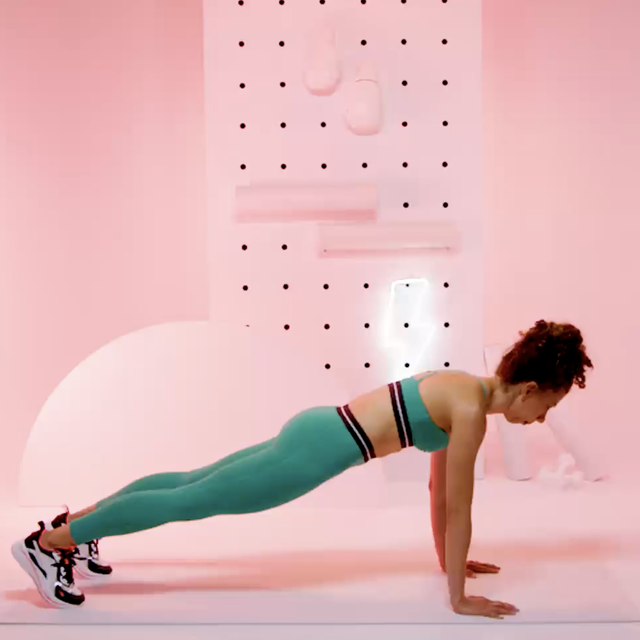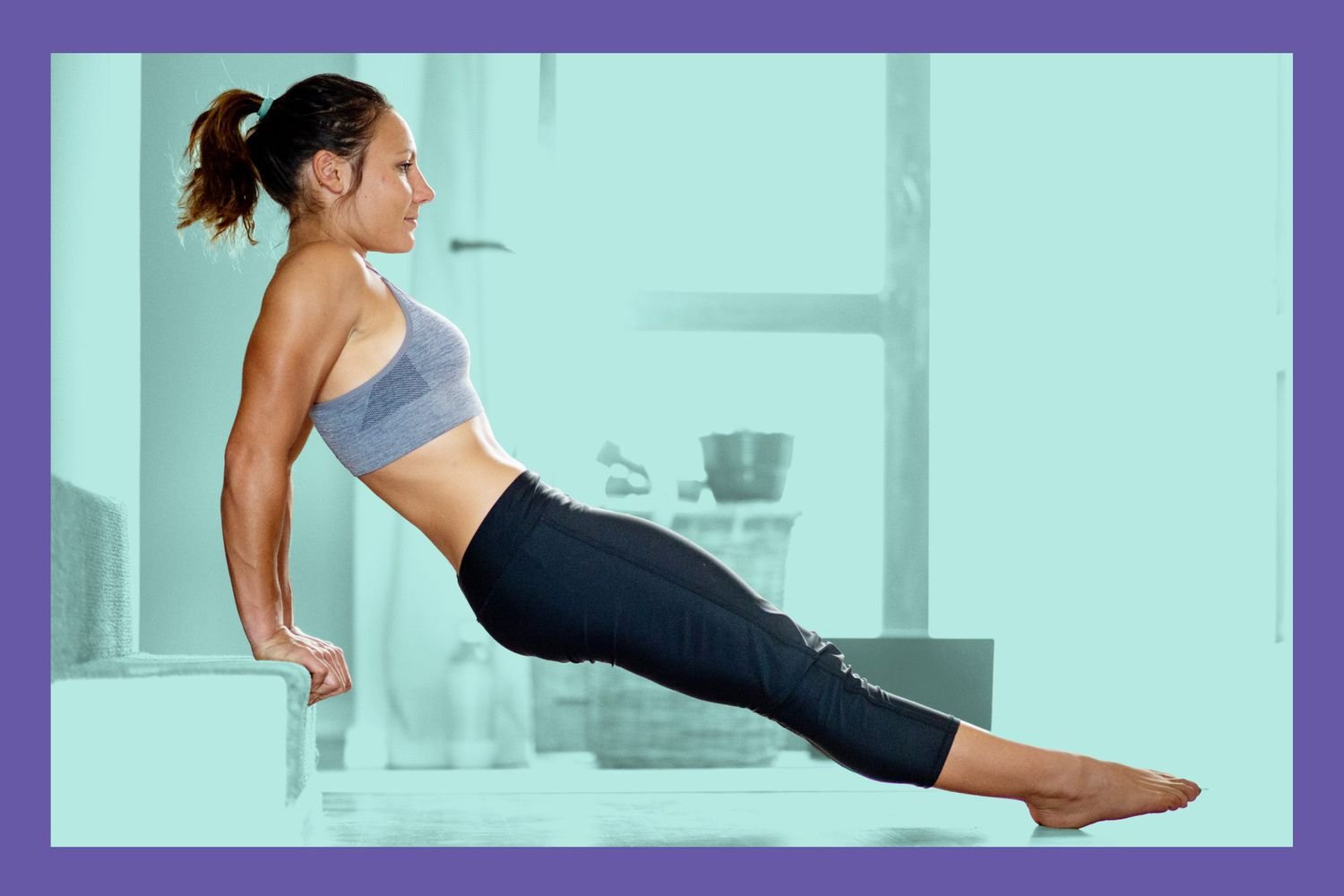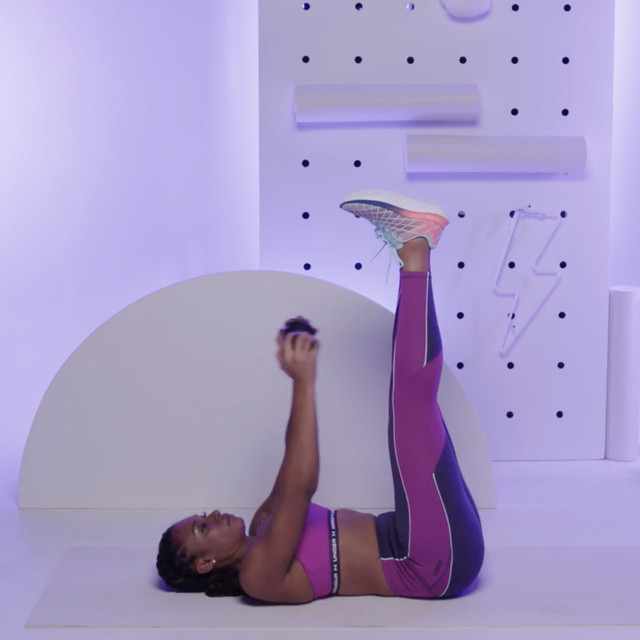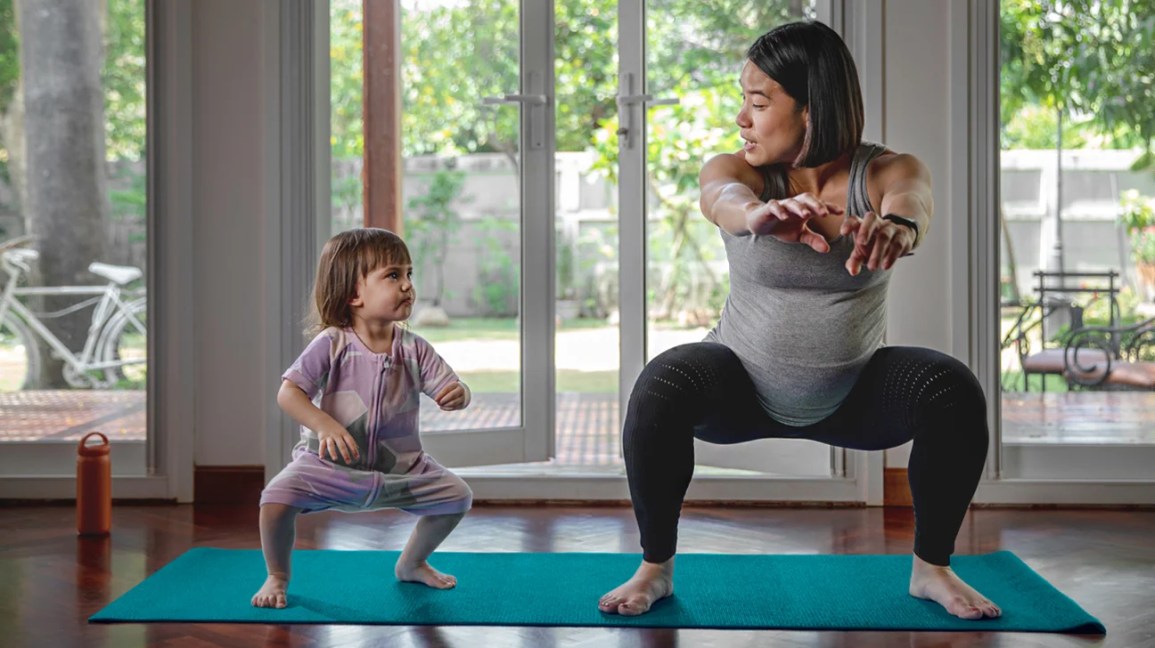Arms and shoulders workouts typically include exercises like bicep curls and shoulder presses. These routines are designed to build strength and muscular definition.
For anyone aiming to sculpt and strengthen their upper body, incorporating a range of arm and shoulder exercises into their fitness regimen is key. A well-rounded arm workout targets the biceps, triceps, and forearm muscles, while a comprehensive shoulder workout focuses on the deltoids and rotator cuff muscles.
Effective routines combine weightlifting with bodyweight exercises to enhance muscle endurance and size. Consistency and proper form are crucial for maximizing benefits and preventing injury. By combining dynamic movements with a structured plan, these workouts can deliver measurable improvements in arm and shoulder strength and appearance, catering to both fitness enthusiasts and those seeking to amp up their physical conditioning.
Introduction To Upper Body Strength
Developing upper body strength is crucial not only for athletes but for everyone. Arms and shoulders play a vital role in everyday activities, from lifting groceries to throwing a ball. An effective arms and shoulders workout can enhance your physical abilities, make daily tasks easier, and improve your overall health. Let’s delve into the benefits of maintaining strong arms and shoulders and the key muscle groups to focus on during your workouts.
Benefits Of Strong Arms And Shoulders
- Improved Posture: Strong muscles keep your shoulders back and spine straight.
- Enhanced Daily Activities: Eases lifting, carrying, and pushing motions.
- Better Athletic Performance: Powers throw, swing, and swimming actions.
- Reduced Injury Risk: Protects joints by providing muscular balance.
Key Muscle Groups For Upper Body Workouts
Targeting specific muscle groups maximizes your workout benefits. Here are the main ones:
| Muscle Group | Function | Exercises |
|---|---|---|
| Deltoids | Shoulder elevation | Presses, Raises |
| Biceps | Elbow flexion | Curls, Pull-ups |
| Triceps | Elbow extension | Dips, Push-downs |
| Trapezius | Shoulder blade movement | Shrugs, Rows |
Combining exercises that target these muscles will ensure a balanced upper body routine. Next, we will explore specific exercises to incorporate into your arms and shoulders workout.
Creating A Balanced Workout Routine
Crafting a balanced arms and shoulders workout is key to building strength and definition. Harmony between various exercises ensures all muscle groups get attention. This section guides on blending movements for optimal results.
Mixing Compound And Isolation Exercises
Combine multiple muscle groups with compound moves. Follow those with isolation exercises. This enhances muscle growth and endurance.
- Start big: Bench press, overhead press, and pull-ups target many muscles.
- Isolate and sculpt: Lateral raises and bicep curls focus on one muscle at a time.
Importance Of Rest And Recovery
Giving muscles time to heal is crucial. Rest days prevent injuries and promote muscle growth.
- 48-hour rule: Allow at least 48 hours before working the same muscles.
- Quality sleep: Aim for 7-9 hours of sleep per night for recovery.
Incorporating Cardio And Flexibility Training
Balance lifting with cardio to boost heart health. Add flexibility exercises for a full-body fitness approach.
| Day | Strength Training | Cardio/Flexibility |
|---|---|---|
| Monday | Arms and Shoulders | 20 mins brisk walking |
| Wednesday | Legs and Back | 10 mins stretching |
Essential Arms Workouts
Strong arms are not just about looking good. They help in daily tasks and improve posture. Essential arms workouts can build power and finesse in the biceps, triceps, and forearms. These exercises can be done with free weights, machines, or just bodyweight.
Bicep Curls Variations
Bicep curls are a staple for arm strength. They focus on the front muscle of the upper arm.
- Standard Curl: Stand tall, hold weights, and curl up.
- Hammer Curl: Weights face in, targeting different fibers.
- Concentration Curl: Sit, brace the elbow, isolate the bicep.
Tricep Dips And Extensions
Tricep muscles run at the back of the arms. They straighten the elbow.
- Tricep Dips: Use a bench, lower the body, and push up.
- Overhead Extension: Lift a weight above and bend the elbow.
- Skull Crushers: Lie down, extend weights from forehead to above.
Forearm Strengthening Techniques
Forearms work during lifts and grips. Strengthen them to avoid injury.
| Exercise | How to Do It |
|---|---|
| Wrist Curls | Sit, rest arm, curl weight with the wrist. |
| Reverse Wrist Curls | Sit, palms down, lift weights using wrists. |
| Farmers Walk | Grab heavy weights, walk holding them tight. |

Credit: www.amazon.com
Shoulders Sculpting Exercises
Sculpting strong, well-defined shoulders requires a targeted approach, emphasizing form, technique, and consistency. The right combination of exercises can improve posture, enhance strength, and build that sought-after V-shape. Explore these shoulder-sculpting exercises to start your transformation today.
Shoulder Press Fundamentals
- Stand or sit with weights at shoulder height.
- Press the weights overhead until your arms are straight.
- Lower them back after a short pause.
- Keep your core tight and back straight.
- Proper form is key for maximum muscle engagement and safety.
Lateral Raises For Deltoid Development
- Stand with feet hip-width apart, weights at sides.
- Lift arms to the side, keeping elbows slightly bent.
- Raise until arms are parallel to the floor.
- Control your movements as you raise and lower the weights.
- Focused resistance targets the middle deltoids.
Upright Rows And Face Pulls
| Exercise | Main Muscles Worked |
|---|---|
| Upright Rows | Shoulders, traps, biceps |
| Face Pulls | Rear deltoids, traps, rhomboids |
Combine these exercises with proper nutrition and rest for the best results.
Integrating Equipment Into Your Routine
An effective arms and shoulders workout can transform your physique. Incorporating the right equipment boosts your strength, endurance, and muscular growth. Whether you prefer dumbbells, barbells, or resistance bands, each piece of equipment has unique benefits. You can even use your bodyweight to train anywhere. Let’s explore the options to amp up your routine.
Dumbbells Vs. Barbells: Pros And Cons
- Dumbbells: Encourage symmetry and balance in muscles.
- Offer a greater range of motion for exercises.
- Individual arm work prevents dominant side from taking over.
- Pros:
- Enhance stabilization.
- Support varied exercises.
- Cons:
- Limitations on weight used.
- Required more balance, which can be tough for beginners.
- Barbells: Let you lift heavier loads.
- Promote powerful compound movements.
- Pros:
- Ideal for progressive overload.
- Simplify muscle mass building.
- Cons:
- Reduce engagement of stabilizing muscles.
- Can aggravate imbalances if not careful.
Resistance Bands For Added Intensity
Add resistance bands to your workout for a versatile challenge. They’re light and portable, perfect for exercise on-the-go. Bands come in various tensions, from light to heavy, to match your strength level. Use them to engage muscle groups effectively during push and pull exercises.
- Boost workout intensity.
- Improve muscle tone and endurance.
- Foster better control and form.
Utilizing Bodyweight For Training Anywhere
Your bodyweight is a natural, powerful tool for arm and shoulder workouts. Exercises like push-ups and dips sculpt your upper body without extra gear. Bodyweight routines are scalable to your fitness level. They can be done anywhere, from your local park to your living room.
- Train with no cost.
- Adapt to any skill level.
- Build core strength and stability.

Credit: www.pinterest.com
Advanced Training Techniques
Ready to push your arms and shoulders to the next level? Advanced training techniques are the key. They shock your muscles into growth. They help you overcome plateaus. They improve your strength and muscular endurance. Below, we dive into three powerful methods for experienced lifters.
Supersets And Drop Sets For Muscle Growth
Supplement your routine with supersets and drop sets to intensify your workout.
- Supersets involve two exercises performed back-to-back with no rest.
- Target opposing muscle groups for balanced development.
- Drop sets push muscles to fatigue by dropping weight and continuing reps.
Benefits include increased muscle endurance and a significant calorie burn.
Pyramid Sets To Challenge Your Strength
Pyramid sets effectively build muscle and strength.
- Start with a lighter weight and do more reps.
- Gradually increase weight and decrease reps.
- Reverse the order for a full pyramid experience.
Challenge yourself with progressive overloading. Watch your strength skyrocket!
Periodization For Long-term Progress
A periodization plan divides your training into phases for sustained progress.
| Phase | Focus | Duration |
|---|---|---|
| 1 | Endurance | 4-6 weeks |
| 2 | Hypertrophy | 4-6 weeks |
| 3 | Strength | 4-6 weeks |
Vary your workout intensity and volume. Keep your muscles guessing. Achieve new gains!
Safety Tips And Injury Prevention
Arms and shoulders workouts are crucial for building upper body strength. Yet, it’s vital to focus on safety to prevent injuries. This section highlights key practices for staying safe during your routine.
Proper Form And Technique
Ensuring you have the correct form is the first step in workout safety. It helps maximize gains and reduces injury risk.
- Keep your back straight to protect your spine.
- Focus on slow, controlled movements.
- Mirror check to compare your posture with correct form visuals.
Consider consulting a professional trainer to correct your form. This small step can lead to big improvements in safety and effectiveness.
Warm-up And Stretching Essentials
Pre-workout warm-ups are a must. They prepare your body for the stress of weight lifting.
- Start with 5-10 minutes of light cardio.
- Follow with dynamic stretches targeting arms and shoulders.
Post-workout stretches help reduce soreness. Hold each stretch for about 20-30 seconds for best results.
Dealing With Common Workout Injuries
| Injury | Immediate Action | Long-Term Care |
|---|---|---|
| Strains | Rest and ice the affected area. | Gradual rehab exercises. |
| Dislocations | Immobilize the joint and seek medical help. | Physiotherapy for recovery. |
| Tendonitis | Anti-inflammatory medication and rest. | Strengthening exercises once healed. |
Remember, if an injury occurs, stop your workout. Continuing exercise may worsen your condition.

Credit: www.womenshealthmag.com
Tailoring Your Workouts To Your Goals
Arm and shoulder workouts are not a one-size-fits-all routine. To see real results, it’s crucial to tailor your exercise plan. Think about your specific fitness objectives. Do you want to grow larger muscles? Maybe you aim to lift heavier weights. Some folks just want toned arms that can endure a long day. Fitness levels vary, so your workout should, too. Let’s explore how to adjust your training for your goals.
Training For Muscle Size Vs. Strength
To build muscle size, known as hypertrophy, focus on moderate weights with more reps. Use 3 to 4 sets of 8 to 12 reps. For strength gains, lift heavier weights with fewer reps. Aim for 4 to 6 sets of 4 to 6 reps. It’s vital to give muscles time to recover between workouts, so include rest days in your routine.
Designing Workouts For Tone And Endurance
If your goal is muscle tone and endurance, choose lighter weights. Do higher repetitions in the range of 15 to 20 reps per set. Consider circuit training. It combines strength exercises with cardio, keeping your heart rate up. Your muscles will become more defined, and your endurance will soar. Keep rest times short to maintain intensity.
Adjustments For Different Fitness Levels
No two people are at the same fitness level. Beginners should start slowly to avoid injury. Use light weights and focus on correct form. Gradually increase the weight and intensity of your workouts. For those more experienced, challenge your muscles by adjusting weights and reps. Try drop sets or supersets to intensify your routine.
| Goal | Weights | Reps | Sets | Rest Time (seconds) |
|---|---|---|---|---|
| Muscle Size | Moderate | 8-12 | 3-4 | 30-60 |
| Strength | Heavy | 4-6 | 4-6 | 60-120 |
| Tone & Endurance | Light | 15-20 | Varies | 20-30 |
- Beginners: Learn proper form with light weights.
- Intermediate: Gradually add more weight to your workout.
- Advanced: Try advanced techniques like supersets or drop sets.
Frequently Asked Questions Of Arms Shoulders Workouts Exercises
Can I Workout Shoulders And Arms Together?
Yes, you can workout shoulders and arms together. This combination allows for a focused upper body training session and efficient muscle fatigue.
What Exercise Works Arms And Shoulders?
Dumbbell shoulder presses effectively target arms and shoulders. Push-ups and lateral raises are also excellent for engaging these muscle groups.
Is It Good To Workout Arms And Shoulders?
Yes, working out arms and shoulders is beneficial. It enhances muscle strength, improves joint stability, and can boost overall upper body functionality. Regular training promotes balanced muscle development and increases metabolic rate.
How Do You Structure Arm And Shoulder Exercises?
Begin with compound movements like shoulder presses. Alternate with arm isolation exercises like bicep curls and tricep dips. Integrate variety with lateral raises and arm rotations. Allow for rest, targeting different muscle groups each session. Finish with stretching to aid recovery and flexibility.
Conclusion
Embrace the challenge of building stronger arms and shoulders with these dynamic exercises. Each move targets key muscles, equipping you with a balanced routine. Consistency and proper form are your allies on this journey. So, grab those weights and let the transformation begin.
Transform your upper body strength and achieve those fitness goals—starting now.


